All About Content Creation, Curation & Distribution For a Winning Marketing Strategy
“The art of content writing lies in the ability to transform mere words into captivating narratives that resonate with the hearts and minds of readers.” – J.K. Rowling.
Content is the fuel that powers effective marketing.
It helps you in engaging and informing audiences, building brand trust, and driving conversions with its persuasive storytelling and valuable insights.
Every marketing strategy today is dependent on content creation, curation and distribution. Larger the distribution channel, wider the connection with the audience.
If you know that your brand needs entertaining and appealing content to connect with the audience faster, this is the time you understand the dynamics of it.
Read further to know more about content.
What Is Content Creation?
Content creation refers to generating and producing various forms of media, such as articles, blog posts, videos, infographics, and social media posts, to provide valuable and relevant information to a specific target audience.
It involves researching, planning, writing, designing, and publishing content across different platforms to engage and attract users, convey a message, and achieve specific marketing or communication goals.
For example, Red Bull has consistently produced engaging and high-quality content across various platforms. Their content includes thrilling videos of extreme sports, captivating stories of athletes and adventurers, and insightful articles related to their brand image of energy and excitement.

Red Bull’s content entertains and inspires their target audience and effectively reinforces their brand identity and values, creating a strong connection with its consumers.
At times, more than creating content, brands help their audience to get all the information at the same place. This is called content curation.
Let us read more to know what is the difference between the two and what you should do for a brand.
Also Read: What is Copywriting?
What is Content Curation?
Content curation is discovering, gathering, organizing, and sharing relevant and valuable information or media from various sources to serve a specific audience or purpose.
It involves sifting through vast online content, such as articles, videos, images, and more, to select the most pertinent and high-quality material.
Content curators aim to provide their audience with an informative, entertaining, or insightful collection, often adding their unique perspective or commentary to enhance the content’s value.
This practice is commonly used in fields like digital marketing, journalism, and education to deliver tailored, meaningful content to a target audience, saving them time and effort in finding valuable information.
Content Curation:Purpose
Content curation serves several important purposes and fulfils specific needs for individuals and brands:
Providing valuable information:
Content curation allows you to gather and present high-quality content from various sources, offering your audience a centralised place to access valuable information, insights, and resources. It saves them time and effort in searching for relevant content themselves.
By curating content from reputable sources, you can establish your brand as a trusted and knowledgeable resource. Sharing content from industry leaders, experts, and thought influencers helps build credibility and positions your brand as a reliable source of information.
Filling content gaps:
Content curation allows you to address topics or areas outside your expertise or resources. You can curate content on niche or specialised subjects, filling content gaps and providing your audience with comprehensive information.
Keeping up with trends:
Curating content helps you stay current and up-to-date with your industry’s latest trends, news, and developments. It allows you to share timely and relevant content with your audience, showcasing your awareness of industry happenings.
Engaging your audience:
Content curation sparks conversation and engagement among your audience. Adding your insights, commentary, or context to the curated content encourages discussions, opinions, and interactions, fostering a sense of community and building relationships with your audience.
Showcasing thought leadership:
Effective content curation demonstrates your ability to filter, curate, and present the most relevant and valuable content. It positions you as a thought leader who can distil and provide insights into complex or vast amounts of information, establishing your expertise and leadership in your industry.
Saving time and resources:
Content curation can be more time-efficient and cost-effective than original content. It allows you to leverage existing content, saving time on content creation while providing value to your audience.
Content Creation Vs Content Curation
These are the difference between content curation Vs content curation:
| Particulars | Content Creation | Content Curation |
| Approach | Generate original content from scratch | Selects and organises existing content |
| Source | Self-produced or created by the brand | Curated from external sources |
| Control | Complete control over messaging, style | Limited control over the original content |
| Time and Effort | Requires more time and effort to create | Requires less time and effort to create |
| Expertise | Showcases in brand’s expertise and knowledge | Demonstration brand’s ability to filter and present |
| Originality | Produces unique and original content | Utilises existing content with added comments |
| Flexibility | Can be customised as per brand’s needs | Adapts to the curated content available |
| Ownership | Content is owned by the creator/brand | Credit is given to the original content |
| Engagement | Build brand authority and thought leadership | Sparks conversation and engagement around curated content |
| Brand Identity | Showcases brand’s unique voice and style | Reflects brand’s ability to curate relevant content |
| Time Sensitivity | Can be time sensitive or time independent | Can be time-sensitive if curated content is current |
Things to know before Content Creation or Content Curation
When it comes to curating or creating content, there are several vital things to keep in mind:
Define your target audience:
Understand the interests, needs, and preferences of your target audience. This will help you curate content that is relevant and valuable to them.
Establish clear goals:
Determine the purpose of your content creation and curation efforts. Having clear goals will guide your content selection, whether it’s to educate, entertain, inspire, or engage.
Source from credible and diverse channels:
Look for reputable sources that provide accurate and reliable information. Curate content from various channels, including industry publications, thought leaders, reputable blogs, and social media, to present a well-rounded perspective.
When you creating content, make it an authentic and no-copy source of information.
Focus on quality over quantity:
Prioritise quality content that adds value to your audience whether you are curating a content piece or generating a fresh idea. Avoid overwhelming them with excessive information and instead focus on curating well-written, insightful, and relevant content.
Add your unique perspective:
Provide commentary or context to the curated content to make it more meaningful and relevant to your audience. Share your insights, opinions, or personal experiences to add value and encourage discussion.
Stay up-to-date:
Continuously monitor industry trends, news, and updates. Curate timely and relevant content reflecting the latest developments, ensuring your audience receives new and valuable information.
Respect copyright and give credit:
Always respect intellectual property rights. When curating content, credit the original source appropriately and provide links to the full content. This maintains ethical standards, builds credibility, and fosters good relationships with content creators.
Engage with your audience:
Encourage interaction and discussion around the curated content. Respond to comments, ask questions, and invite your audience to share their thoughts and experiences. This helps create a sense of community and fosters engagement.
Content Formats Popular for Marketing
Several popular content formats are widely used for marketing purposes. Some of them include:
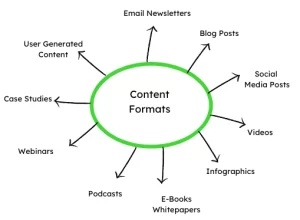
Blog Posts:
Informative and engaging articles published on a blog platform, offering in-depth insights, advice, news, or storytelling related to a specific topic or industry.
Social Media Posts:
Short and concise updates, images, videos, or infographics shared on various social media platforms to engage and interact with the target audience.
Videos:
Visual content in the form of recorded videos or animations that can be shared on platforms like YouTube, social media or embedded in blog posts. Videos include tutorials, product demos, interviews, behind-the-scenes footage, and storytelling.
Infographics:
Visual representations of information, data, or statistics presented in a visually appealing and easy-to-understand format. Infographics are often shared on social media, blogs, or websites.
Ebooks and Whitepapers:
Comprehensive and in-depth content pieces presented in a longer, downloadable format. E-books and whitepapers provide detailed information, research findings, case studies, or guides on specific topics.
Podcasts:
Audio content that can be downloaded or streamed, typically as episodic series. Podcasts cover various topics and allow for conversations, interviews, educational content, or storytelling.
Webinars:
Online seminars or presentations conducted in real-time or recorded and shared later. Webinars are often used for educational purposes, product demonstrations, thought leadership, or training sessions.
Case Studies:
Detailed analysis of real-life examples or success stories showcasing how a product or service has helped solve a specific problem or achieve desired outcomes. Case studies demonstrate credibility and the value of the offering.
User-Generated Content:
Content created by users or customers, such as reviews, testimonials, social media mentions, or user-submitted stories. User-generated content adds authenticity and builds social proof.
Email Newsletters:
Regularly distributed emails containing curated or original content, updates, promotions, or personalised messages. Email newsletters help nurture and engage subscribers.
Best AI tools for Content Marketing
There are several AI-powered tools available that can significantly assist with content marketing. Here are some popular ones:
Grammarly:

A widely-used writing assistant that uses AI to improve grammar, spelling, and style. It helps content creators produce error-free and well-polished content.
BuzzSumo:

This tool leverages AI to analyse content performance and identify popular topics and trends. It helps marketers discover trending content and influencers and optimise their content strategy.
CoSchedule Headline Analyzer:

An AI-driven tool that analyses headlines and provides suggestions for improving their effectiveness. It helps create compelling and attention-grabbing headlines for blog posts, articles, and social media.
Clearscope:
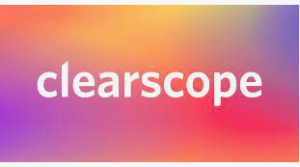
A content optimization platform that uses AI to analyse content and provide recommendations for improving search engine optimization (SEO). It helps creators optimise their content to rank higher in search engine results.
Acrolinx:

This tool uses AI to analyse and improve content quality, consistency, and adherence to brand guidelines. It assists content creators in maintaining brand voice and ensuring high-quality content across various channels.
MarketMuse:

An AI-powered content intelligence platform that helps plan and optimise content. It analyses the competitive landscape, identifies content gaps, and provides recommendations for improving content relevance and authority.
Phrasee:
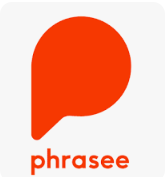
AI-powered copywriting tool that generates optimised and engaging marketing copy. It uses natural language processing to create compelling email subject lines, social media posts, and ad copy.
Curata:
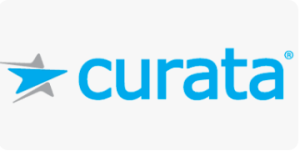
An AI-driven content curation platform that helps discover, organise, and distribute relevant content. It streamlines the content curation process and assists in providing a curated experience for the audience.
How To Execute A Winning Content Distribution Strategy For Marketing?
To execute a winning content distribution strategy for your marketing, follow these steps:
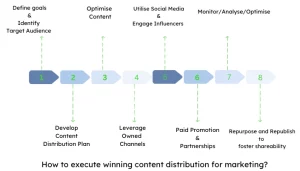
Define your goals:
Clearly establish the objectives of your content distribution efforts. Are you aiming to increase brand awareness, drive website traffic, generate leads, or boost conversions? Defining your goals will guide your distribution strategy.
Know your target audience:
Understand your target audience’s demographics, interests, online behaviour, and preferred platforms. This knowledge helps you identify the channels and tactics to effectively reach and engage them.
Develop a content distribution plan:
Create a detailed plan outlining the channels, platforms, and tactics you will use to distribute your content. Consider a mix of owned, earned, and paid media channels to maximise reach and impact.
Optimise your content for distribution:
Ensure your content is optimised for the chosen distribution channels. Adapt the format, length, and messaging of your content to suit the preferences and limitations of each platform.
Leverage owned channels:
Start by sharing your content through your owned channels, such as your website, blog, and email newsletter. Promote your content prominently and consistently to your existing audience to generate initial engagement.
Select the platforms that align with your target audience’s preferences and actively engage on those channels. Craft attention-grabbing posts, leverage visual elements, and use relevant hashtags to maximise visibility and encourage sharing.
Engage with influencers:
Collaborate with influencers or thought leaders in your industry with a significant following. Partner with them to co-create or share your content, expanding your reach and leveraging their credibility and influence.
Amplify through paid promotion:
Consider investing in paid advertising to amplify the reach of your content. Use social media, search engines, or native advertising to target specific audience segments and increase visibility.
Form partnerships with other relevant websites, publications, or content syndication platforms to distribute your content to their audience. Syndicating your content on established platforms exposes you to new audiences and boosts credibility.
Monitor, analyse, and optimise:
Regularly track and measure the performance of your content distribution efforts. Monitor metrics such as reach, engagement, conversion rates, and ROI. Analyse the data to identify successful channels and tactics and optimise your strategy accordingly.
Repurpose and republish:
Repurpose your high-performing content into different formats or update it to stay relevant. Republish it on different platforms, reaching new audiences and maximising the value of your content.
Encourage audience engagement by responding to comments, asking for feedback, and sparking conversations around your content. Make it easy for readers to share your content by including social sharing buttons and CTAs.
Conclusion
Content creation and content curation are powerful strategies that fuel your marketing efforts and engage your target audience. Content creation allows you to showcase your expertise, create original and tailored content, and establish your brand’s unique voice.
On the other hand, content curation helps you provide valuable information, tap into industry trends, and position yourself as a trusted source by curating and sharing relevant content from various sources.
To drive the success of your marketing campaigns, it’s crucial to strike a balance between content creation and content curation. By leveraging the strengths of both approaches, you can offer your audience a comprehensive and compelling content experience.
Whether you require expertly crafted original content or assistance in curating relevant and engaging material, we’re here to help. Contact us today to discuss your content requirements, and let us help you create a winning content strategy that resonates with your audience and achieves your marketing goals.
FAQ
What is content creation?
Content creation refers to generating original, valuable, and relevant content for a specific purpose or audience. It involves brainstorming ideas, researching, writing, designing, and producing various types of content, such as blog posts, articles, videos, infographics, and more.
What is content curation?
Content curation involves gathering, organising, and sharing existing content from different sources to provide value and insights to a target audience. It entails selecting, filtering, and presenting relevant content in a curated manner, often with added context or commentary to enhance its value.
Which is better, content creation or content curation?
Both content creation and content curation have advantages and play important roles in a comprehensive content strategy. Content creation allows you to showcase your unique expertise and brand voice. In contrast, content curation helps you provide a curated experience, tap into industry trends, and save time by leveraging existing content. The ideal approach depends on your goals, resources, and target audience.
How does content creation benefit businesses?
Content creation helps businesses establish thought leadership, build brand authority, attract and engage their target audience, drive website traffic, improve SEO, and generate leads. By creating original, high-quality content, businesses can position themselves as valuable resources and gain a competitive edge in their industry.
What are the benefits of content curation?
Content curation offers several benefits, including saving time and resources by leveraging existing content, providing a curated and organised experience for the audience, showcasing thought leadership by curating valuable insights, filling content gaps in specialised areas, and fostering engagement and conversations among the audience.
How can content creation and content curation work together?
Content creation and content curation can complement each other in a content marketing strategy. Original content can be shared through curated channels, which can be used to supplement and enhance original content. By combining both approaches, businesses can provide a diverse range of valuable content to their audience while maximising efficiency and expertise.
How often should I create new content or curate content?
The frequency of content creation and curation depends on various factors, such as your industry, audience preferences, available resources, and marketing goals. Maintaining consistency, providing fresh content regularly, and engaging with your audience are important. Find a balance that allows you to consistently deliver quality content without compromising relevance or value.
Can content creation and curation help with SEO?
Yes, both content creation and content curation can contribute to SEO efforts. Creating original, high-quality content can improve search engine rankings and increase organic traffic. Curating relevant content from authoritative sources can enhance your website’s credibility, provide backlink opportunities, and boost SEO performance.
How can I measure the effectiveness of my content creation and curation efforts?
To measure the effectiveness of your content efforts, you can track various metrics such as website traffic, engagement metrics (like time on page, social shares, comments), conversion rates, lead generation, and audience feedback. Analytical tools and platforms can provide valuable insights to evaluate the impact of your content and make data-driven decisions.
How can I get started with content creation and content curation?
To get started, define your content goals and audience, research your audience’s interests and preferences, create an editorial calendar, and allocate resources. For content creation, brainstorm ideas, develop a workflow, and leverage your expertise. For content curation, identify reliable sources, curate valuable content, and add your own insights to enhance its value.



